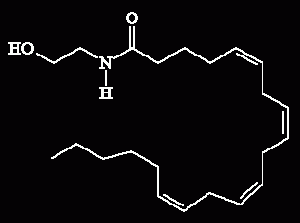Theobroma Cacao

Cacao Tree
Theobroma Cacao is a small tree which produces one of the world’s most sought after fruits, Cacao. Cacao originates from the Amazon Basin where it grew wild before domestication and cultivation. More than 5,000 years ago, not long after its domestication in todays South America, Cacao was being cultivated in Mesoamerica.
Cacao grows within 20 degrees of the equator at optimal elevations of between 500 – 2000 feet. Notable countries that produce Cacao are Guatemala, Mexico, Trinidad, Costa Rica, Belize, Honduras, Venezuela, Ecuador, Brazil, Peru, Ivory Coast, Ghana, Nigeria, Cameroon, Indonesia, Philippines and more.
The Cacao Pod grows from the trunk of the Cacao Tree and will change colors when ripened. Inside the Cacao Pod the Cacao Beans are covered in a high vitamin content fruit which is white in color and has a cotton candy look. The Cacao Fruit is very sweet. Cacao Fruit is consumed raw or fermented into a Cacao Fruit Wine. Cacao Beans are separated from the fruit and allowed to ferment and dry in the sun or greenhouse. The Cacao Beans are then lightly toasted. The Cacao Beans can be served as is, broken into Cacao Nibs or ground into a Cacao Paste. Cacao Butter can then be separated from the Cacao Paste.
Cacao Pod & Fruit
Cacao Varietes
Cacao can be found in three varieties or strains: Forastero, Criollo & Trinitario. Forastero is the strain of Cacao most commonly grown around the world with large quantities being grown in Africa. It produces a large bean and is suitable for cultivation in large quantities. Criollo produces a smaller bean and is thought to be less than 10% of the Cacao grown worldwide. Trinitario is a cross between Forastero and Criollo. Trinitario gets its name from Trinidad where it was originally grown.
*Although many farms around the world claim to produce “Criollo” Cacao, it is almost impossible to produce 100% Criollo because each Cacao Pod can produce Cacao Beans of varying percentages of Forastero, Trinitario and Criollo. We have found the Cacao that is grown deep in the highlands of Guatemala to contain the highest percentage of Criollo Cacao.
Cacao is regarded as more than just a food by many of the Indigenous groups throughout Mesoamerica. Cacao is a “Gift from the Gods” and Theobroma translates to “Food of the Gods.” Cacao is used ceremonial to give gratitude, ask for abundance and for the healing of the mind, emotions and Spiritual connection. Cacao has been used ceremoniously and as medicine for healing as early as the pre-mayan Olmec cultures. The Mayan tell us that the Cacao was a gift from a deity and that the Spirit of Cacao is conjured up when drinking Cacao in Ceremony. The Mayan used Cacao for Ceremony, medicine and personal consumption. The Aztec later increased the use of Cacao and began to incorporate Cacao into the diet of the population. Cacao could not be easily grown in the regions of the Aztec cities so the areas of Aztec conquest that could grow Cacao supplied the growing demand for Cacao. Cacao soon became used as a form of currency and trade. Many tributary cultures would pay their tribute with Cacao.
Cacaos Indigenous Origins
One Version of the Story
The Mayan world was composed of hundreds of tribes, as well as urbanized agricultural areas and large urban developed cities. We find that even each family or story teller beautifully weaves the flavor of their tribal belief system into the stories. For this reason we can find many different stories for the same subject in Mayan lore.
In one Mayan story the God of Maiz sacrifices himself while being defeated in a battle with the Gods of the Underworld. From his death grows a tree bearing all the fruits that would sustain humankind. These fruits had previously been used by the Gods of the Underworld. At the top of the tree was the Maiz and along the trunk of the tree we find Cacao. Cacao is depicted as one of the avatars created from the rebirth of the God of Maiz. There are many carvings and pottery remains that show the God of Maiz rebirthing as a Cacao Tree.
Science of Cacao
Theobromine
 Theobromine was discovered in Cacao in 1842. The alkaloid Theobromine increases the blood flow, energy and heart rate in the body. It has similar effects as caffeine without the jitters that can be caused by caffeine consumption. Theobromine gives the body an energetic boost and can help to feel into the energy moving in the body.
Theobromine was discovered in Cacao in 1842. The alkaloid Theobromine increases the blood flow, energy and heart rate in the body. It has similar effects as caffeine without the jitters that can be caused by caffeine consumption. Theobromine gives the body an energetic boost and can help to feel into the energy moving in the body.
 Theobromine was discovered in Cacao in 1842. The alkaloid Theobromine increases the blood flow, energy and heart rate in the body. It has similar effects as caffeine without the jitters that can be caused by caffeine consumption. Theobromine gives the body an energetic boost and can help to feel into the energy moving in the body.
Theobromine was discovered in Cacao in 1842. The alkaloid Theobromine increases the blood flow, energy and heart rate in the body. It has similar effects as caffeine without the jitters that can be caused by caffeine consumption. Theobromine gives the body an energetic boost and can help to feel into the energy moving in the body.
- Magnesium | 50 grams of Cacao Beans contains approx. 62% of Daily Value
- Potassium | 50 grams of Cacao Beans contains approx. 22% of Daily Value
- Iron | 50 grams of Cacao Beans contains approx. 36% of Daily Value
Anandamide
 Anandamide is a fatty-acid neurotransmitter, naturally found in the body, that was discovered in Cacao in 1992. Anandamide is an endocannabinoid and binds to our cannabinoid receptors which in turn effects our nervous system. Anandamide is a prostamide, a precursor family to psychoactive substances. Anandamide effects are blissful (hence the name Ananda meaning Bliss in Sanskrit), expansive, heart warming and energetically opening.
Anandamide is a fatty-acid neurotransmitter, naturally found in the body, that was discovered in Cacao in 1992. Anandamide is an endocannabinoid and binds to our cannabinoid receptors which in turn effects our nervous system. Anandamide is a prostamide, a precursor family to psychoactive substances. Anandamide effects are blissful (hence the name Ananda meaning Bliss in Sanskrit), expansive, heart warming and energetically opening.
 Anandamide is a fatty-acid neurotransmitter, naturally found in the body, that was discovered in Cacao in 1992. Anandamide is an endocannabinoid and binds to our cannabinoid receptors which in turn effects our nervous system. Anandamide is a prostamide, a precursor family to psychoactive substances. Anandamide effects are blissful (hence the name Ananda meaning Bliss in Sanskrit), expansive, heart warming and energetically opening.
Anandamide is a fatty-acid neurotransmitter, naturally found in the body, that was discovered in Cacao in 1992. Anandamide is an endocannabinoid and binds to our cannabinoid receptors which in turn effects our nervous system. Anandamide is a prostamide, a precursor family to psychoactive substances. Anandamide effects are blissful (hence the name Ananda meaning Bliss in Sanskrit), expansive, heart warming and energetically opening.
